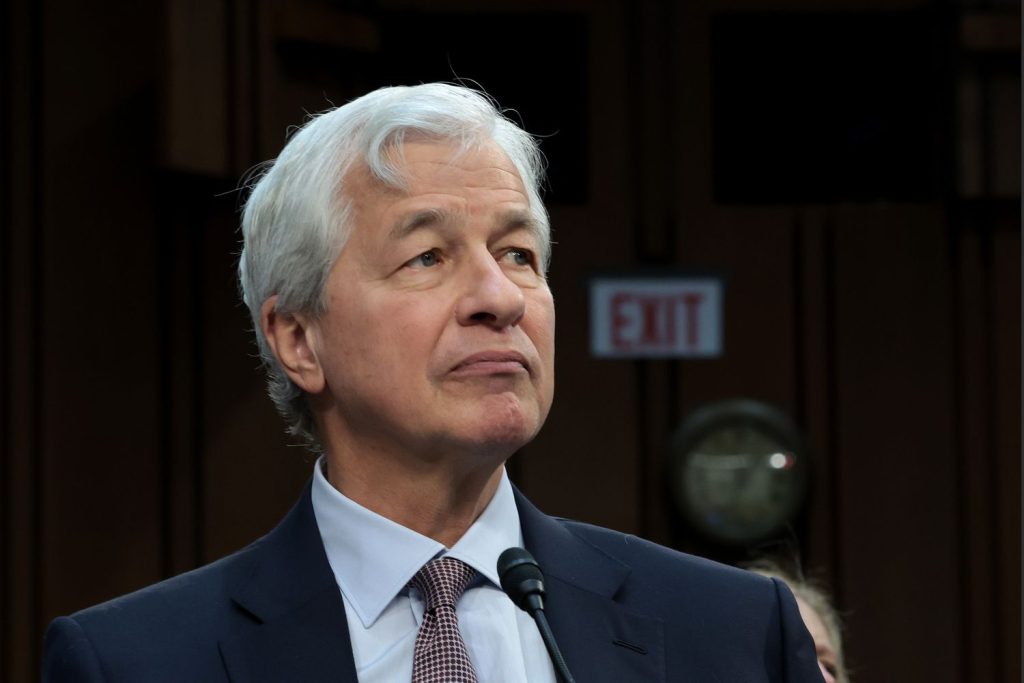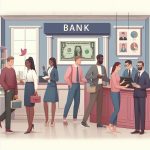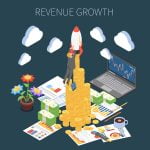This website uses cookies so that we can provide you with the best user experience possible. Cookie information is stored in your browser and performs functions such as recognising you when you return to our website and helping our team to understand which sections of the website you find most interesting and useful.

How Jamie Dimon Built Chase Into the U.S.’s Most Powerful Bank

These were the CEOs of today’s five biggest banks in the US in 2006. This is that group in 2011, in 2016, and in 2021. You’ll notice one face remained the same: this man, JPMorgan Chase CEO Jamie Dimon. He is the bank; the bank is him in some ways.
Dimon’s Rise to Prominence
Over his tenure, Dimon has become the go-to voice for banks. “We need healthy, big banks. We have the best banking system in the world,” he says. Here’s how Dimon’s strategy for managing risk has made him the most powerful player in the industry and how he’s used that position to steer the entire banking world. Dimon built his reputation over a career that stretches back decades. He has shaped how the big banks think about what is safe and what isn’t. You can look around and see that his lieutenants and former executives run a whole bunch of other banks, and they all were schooled in how to run a bank by Jamie Dimon. He’s not a reckless banker. He understands you need to take risks to make money, but you also need to understand the risk and manage the risk.
The Fortress Balance Sheet
The center of Dimon’s risk management strategy is a concept he calls the fortress balance sheet. “I always thought you should have a fortress balance sheet in this business and maybe some of yours, because bad things happen,” he says. The idea is to build up a cushion of assets and capital to protect consumers’ deposits if the bank gets hit by unexpected shockwaves.
Most banks will build the moat and build up their walls and say, “We’re protected.” But what Jamie Dimon says is, “Okay, but those walls might be made of paper mache, so on top of that wall that all the other banks have, we’re gonna add a higher wall, and then we’re gonna add some terraces up here, and then we’re gonna add some people walking around all the time making sure that everything is safe—all the way down.” Is it fair to say that JPMorgan could have losses of half a trillion dollars or a trillion dollars? “Not unless this earth is hit by a moon,” he says. He doesn’t care about this quarter’s results. He doesn’t care about next year’s results. He cares about making sure the bank is safe. Partly he gets to say that because he still makes a ton of money on everything he does, but it’s worked.
Weathering the 2008 Financial Crisis
That strategy helped JPMorgan Chase and Dimon emerge from the 2008 financial crisis relatively unscathed, and even in a position to assist the government. “We were called upon to take actions to help stabilize the system,” he says. In the aftermath, the bank put up big bids to acquire two failing financial institutions from the government: Bear Stearns and Washington Mutual. So he makes these smart acquisitions that were beneficial to him and beneficial to the government.
Strategic Acquisitions
At the time, Sheila Bair was the head of the FDIC. She orchestrated bids for Washington Mutual, the largest bank to fail in US history. “We were having a hard time getting bidders; a lot of banks just didn’t want to touch it,” she says. “So he did not withstand the fact we were running a competitive process. He still came in and bid, thank goodness. And, as I suspected he would, he did win the bid by a pretty large margin.”
Even with debts incurred and lawsuits following from those purchases, the moves helped Chase grow to be the largest bank by deposits by 2011. “He’s gonna look at something like Washington Mutual and say, ‘That’s gonna give us more deposits and more customers. And we’re getting it at a super cheap price; the government’s supposed to share the losses. This is a risk that is worth taking.’ WaMu put us into California, where we really were in Florida, we had a very small presence. Washington State.” JPMorgan grew even larger in May after it bought First Republic Bank, the second-largest bank to fail in US history. But this also raised concern that the bank was too big to fail, meaning that if it were to collapse, it would have a devastating impact on the economy. “Are you too big to fail?” he is asked. “I don’t know what that word means anymore,” he replies. JPMorgan Chase does benefit from the perception of being too big to fail. “I know they don’t like to hear that. They think they’re very well run and they are a great bank, but I’m sorry, they get a benefit. Nobody thinks, even if JPMorgan Chase got into trouble, nobody thinks it would ever be closed.”
Lessons from Mistakes
But Dimon has made missteps in the past. In 2012, the bank lost more than $6 billion after an employee made a series of risky bets. “This transaction that you said morphed—what did it morph into? Russian roulette? It morphed into something I can’t justify that was just too risky for our company,” he says. He does impose accountability in the context of risk. “That could be one of your best risk management tools: to make sure you tell your people, ‘Go out and take some risk. Make some money. Understand the risk. Manage the risk. Stay within our risk appetite. And understand, if you take stupid risks, you’re gonna be accountable.’ I said, ‘Don’t put me on the pedestal. Just stop that. Companies make mistakes and CEOs make mistakes.'”
Industry Influence
While Dimon’s management style has helped the bank grow even larger than its competitors, it’s also expanded his role in the industry. “If you’re the Treasury Secretary and there’s something broken in the banking industry, Jamie Dimon is your first call,” he says. Treasury Secretary Janet Yellen called Dimon to kickstart First Republic’s initial rescue effort. “It bought the bank time. It did seem to help the crisis, and really other CEOs and other banks have been like, ‘It was Jamie.'”
Over the years, Dimon has become the go-to voice for banks in Washington. “Members of the committee, I appreciate the opportunity to talk about JPMorgan Chase, the role of America’s largest banks as a force for good for the country, its citizens, and the global economy,” he says. When they all go to testify pretty much every year in front of Congress, the other CEOs are like, “Let’s let Jamie answer the questions. We’ll let him be the guy out front.” And part of that’s because he’s built this reputation and he’s less worried about losing his job or getting regulators mad at him. “I think it will put smaller banks in a position that, when a crisis hits, they will virtually have to stop lending because putting up those reserves will be too much at precisely the wrong time. So I do think this becomes an issue for you all to reconsider,” he says.
Public Persona
Dimon is known to be outspoken in public statements too. “Bitcoin itself is a hyped-up fraud,” he says. “It’s almost an embarrassment being an American citizen, traveling around the world and listening to the stupid shit we have to deal with in this country. You ask me, I’ll tell you my opinion. That’s not a JPMorgan opinion, stuff like that, but…” He is the same person privately and publicly. He’ll curse, he’ll get excited about things, he’ll dismiss other things—he is Jamie.
The Future of JPMorgan Chase
A spokesperson for JPMorgan Chase and Jamie Dimon declined to comment for this video. After nearly two decades atop JPMorgan Chase, there have been questions about who could fill his shoes when he decides to move on. “He truly has no hobbies from what I can tell. Even his friends are like, ‘He doesn’t do anything other than run the bank,'” he says.
But Dimon doesn’t plan on going anywhere soon. “I’m not gonna play golf. I love my country, I love my company, I love my family. I’m gonna do something. I can’t do this forever, I know that. But my intensity is the same.” A normal person might say it’s time to hang up the shoes, but Jamie Dimon is not necessarily a normal person.







